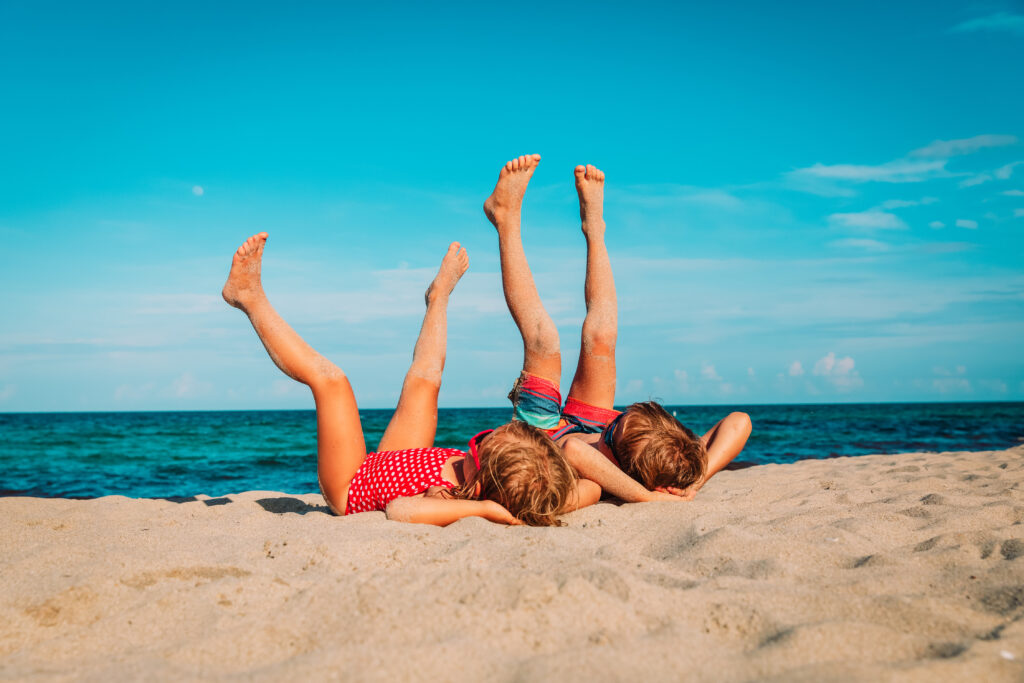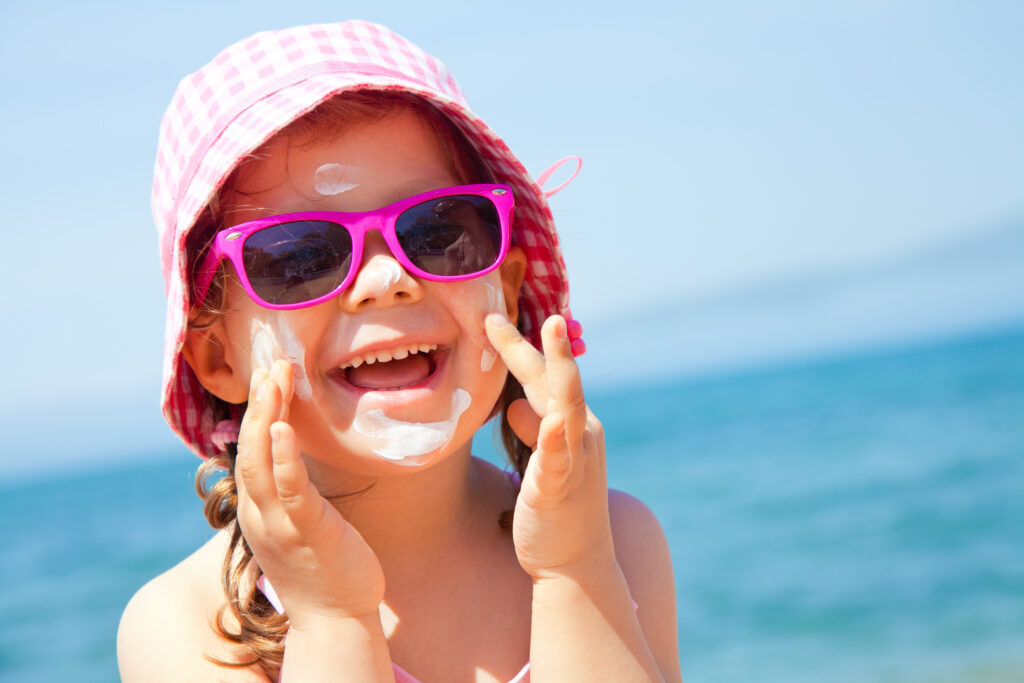Sun Safety Tips For Kids

The next few months in Texas will be very hot with lots of sunshine. Summer is a great time of the year – kids get a break from school, can enjoy swimming and splash pads, and maybe even a beach vacation. However, we know that sun exposure in childhood increases skin cancer risk later in life. Sun damage is cumulative, meaning that earlier sun damage creates more long term risk. And unfortunately, sun damage cannot be reversed. Here are some sun safety tips to keep your child safe from damaging sun rays during the summer fun:
Sun Safety Tip #1: Sunscreen, of Course!
You’ve heard about the importance of applying sunscreen a million times, with good reason. Sunscreen can do a great job of protecting skin from harmful rays when it is applied correctly.
Use the right kind:
- I recommend mineral sunscreen for kids for 2 reasons. First, it does not contain chemicals which are absorbed into the skin. Second, I see less allergic reactions to the mineral sunscreen compared to the chemical sunscreens. There are lots of brands that make mineral sunscreen. You are looking for the words: Zinc Oxide and mineral sunscreen on the bottle. Fragrance free options are my favorite (less potential skin irritation). Water resistant is also a plus. They make a stick form that you can let kids draw on themselves and then help them rub it in. Try to find ways to make it fun so it’s not such a struggle. “Can you count how many waves come into the shore while I put your sunscreen on? What letter am I drawing on your back? Let’s plan what game we should play in the pool next!”
- Make sure it’s not expired. Sunscreen actually does expire and loses it’s effectiveness! A lot of bottles have an expiration date on them. Most sunscreens are good for about 3 years.
Apply Correctly:
- It takes at least 15 minutes for skin to absorb sunscreen. This means that you should apply sunscreen at least 15-20 mins before you go out into the sun.
- Adult sized humans need about an ounce (golf ball size) for their whole body. Depending on how big your kid is, they may need anywhere from ½ an ounce to a full ounce to cover their body. For reference, filling up your whole palm with sunscreen would be about an ounce. A kid sized palm would hold about ½ an ounce.
- Sunscreen should be applied at least every 2 hours, or if kids are swimming, every hour. As soon as they get out of the water, they should get dried off and reapply.

Sun Safety Tip #2: Clothes
UPF clothes are a great way to protect skin from the sun’s rays. UPF (Ultraviolet protection factor) of 50+ is best when you are shopping. There are lots of options! Broad brimmed hats, lightweight shirts with sleeves, shorts, skirts, and leggings are all helpful. Just don’t forget that any area not covered by the clothing (face, ears, necks, hands, ankles, feet, etc) still needs sunscreen.
Sun Safety Tip #3: Timing
The sun’s harmful UV rays are the strongest between 10am and 4pm. Getting out before or after these times lets you enjoy some outdoor time without as much skin damage. But, you should still apply sunscreen no matter what time you are going out (unless it is nighttime). Also, don’t forget that you can get sunburned even on cloudy days. 80% of the sun’s harmful UV rays pass through the clouds. If you are going to be out between the hours of 10am and 4pm, make sure you have shade available. Try to spend more time in the shade than not during these hours of sun intensity.
Sun Safety Tip #4: Hydration
Make sure to keep the kids sipping on liquids all throughout the day. It’s a great idea to have everyone drink at least a cup of water before heading outside to play. I recommend that kids stop for a drink break at least once per hour. Their thirst should help guide them, but for older kids who are playing/sweating vigorously, aim to drink at least 8-10 oz per hour. Water is the best option for hydration. Electrolyte drinks such as Gatorade are ok, but not as a substitute for water. Avoid soda and tea, as these can actually speed up dehydration. After you have come back inside, keep encouraging water intake all throughout the evening.
Sun Safety Tip #5: Don’t forget the eyes and lips!
The sun’s UV rays are also harmful to eyes and lips. You can protect your child’s eyes by having your them wear UVA and UVB blocking sunglasses and a hat. Also protect their lips by applying a SPF chapstick or lip balm. Just like with sunscreen, look for at least SPF 30 and apply at least every 2 hours.
~~Dr. Webb
Resources:
https://www.healthychildren.org/English/safety-prevention/at-play/Pages/Sun-Safety.aspx
